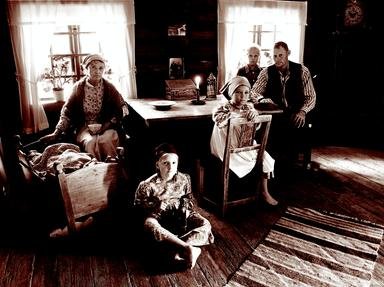Quiz Answer Key and Fun Facts
1. These candles were smoky, burned fast, and drooped on hot summer days unless the main ingredient was mixed with some other wax. They didn't smell all that good, either. So why did people even bother with them? They were cheap: the typical poor person's candle. What were they?
2. All good things come to an end, and so did one of Americans' popular lamp oils, just after the mid nineteenth century. Its raw ingredient was harvested from the wild, and as too much was taken, it became rarer, more expensive for Americans to harvest and therefore too costly for consumers, who looked for other, cheaper lamp oil alternatives. What was this oil that was once a mainstay of lighting, but is now heavily regulated and almost unavailable?
3. These basic lamps, made of iron or tin, could be found in many pioneer homes. Loved by frugal housewives, they could burn a variety of kitchen fat trimmings that might otherwise go to waste. They were a step up from the simplest ancient lamps that had dripping wicks and open reservoirs of melted fat which could spill, because they had closed reservoirs and a mechanism to support the wick more efficiently. What were they called?
4. Delamar Kinnear patented a tin lamp in 1851 with a uniquely shaped reservoir and an extra wide wick, which kept this oil warm enough to rise steadily up the wick and therefore be practical as a lighting oil. Kinnear, who was an Ohioan, also helped his state's farmers, because this oil could be refined from a farm product that Cincinnati, Ohio was already famous for processing. What oil did Kinnear's lamp burn?
5. Based on discoveries in the early nineteenth century, these candles, made from specially refined animal fat, became popular due to their slow rate of burn, hardness, and ability generally to withstand warm weather without drooping. They were issued to Civil War soldiers by the thousand, and eagerly purchased by housewives who felt the extra expense was well worth the extra quality. They had several names, all referring to basically the same thing. What were they called?
6. "Burning fluid," introduced in the 1830s, gave a steady, bright light. Though the name referred to a few different formulations, typically it was a mixture of alcohol and oil of turpentine. "Camphine" was another name. It evaporated quickly, but lamps designed for it had little caps that fit over the wick tubes to keep it from evaporating when not in use. So why didn't a blend of oil of turpentine and alcohol become a favorite lamp oil?
7. The popularity of this new lamp oil began soaring in the 1850s. It was reasonably cheap, burned brightly and steadily, and was becoming readily available, thanks to a discovery in Titusville, Pa. It's still often used for light and heat today, where electricity isn't available. What was this popular lamp oil?
8. All those lamps and candles needed lit somehow. Flint and steel would produce a spark, though using a flame from another candle, lamp or the fireplace was quicker. As matches became cheap, safe and widespread, people relied more on them. They were usually called just "matches", but one brand name also became so well known that people used it as a generic name for matches too.
What was this biblical nickname for matches, that evoked both their ability to give light and their sulphurous smell?
9. Policemen loved little metal "dark lanterns". They might also be called "bullseye lanterns", due to the round lens that concentrated the light in a narrow beam. They were made to clip on a belt or to be held in the hand with the beam shining forward, like a modern flashlight, so they were handy on patrol. Not all bullseye lanterns were dark lanterns, though. What made them "dark"?
10. Gas lights became popular in cities, starting in England and spreading to the US. In 1816, Baltimore was the first US city to have gas street lamps. Gas plants produced the gas and sold it to individuals for home lighting as well. Some wealthy people who lived beyond the range of the nearest plant even installed equipment in their homes to make their own. Unlike natural gas, this gas had to be manufactured from a solid. What was it made from?
Source: Author
littlepup
This quiz was reviewed by FunTrivia editor
bloomsby before going online.
Any errors found in FunTrivia content are routinely corrected through our feedback system.
